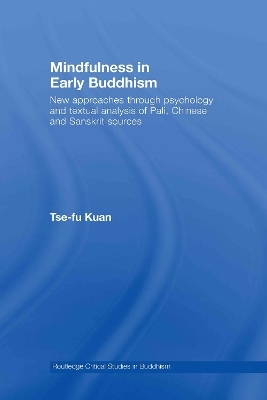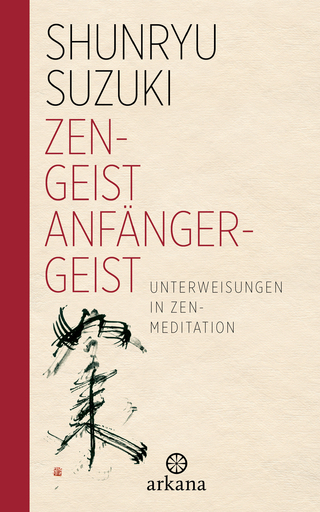
Mindfulness in Early Buddhism
Routledge (Verlag)
978-0-415-43737-0 (ISBN)
This book identifies what is meant by sati (smrti), usually translated as ‘mindfulness’, in early Buddhism, and examines its soteriological functions and its central role in the early Buddhist practice and philosophy. Using textual analysis and criticism, it takes new approaches to the subject through a comparative study of Buddhist texts in Pali, Chinese and Sanskrit. It also furnishes new perspectives on the ancient teaching by applying the findings in modern psychology. In contemporary Buddhism, the practice of mindfulness is zealously advocated by the Theravada tradition, which is the only early Buddhist school that still exists today. Through detailed analysis of Theravada's Pali Canon and the four Chinese Agamas - which correspond to the four main Nikayas in Pali and belong to some early schools that no longer exist - this book shows that mindfulness is not only limited to the role as a method of insight (vipassana) meditation, as presented by many Theravada advocates, but it also has a key role in serenity (samatha) meditation. It elucidates how mindfulness functions in the path to liberation from a psychological perspective, that is, how it helps to achieve an optimal cognitive capability and emotional state, and thereby enables one to attain the ultimate religious goal. Furthermore, the author argues that the well-known formula of ekaayano maggo, which is often interpreted as ‘the only way’, implies that the four satipa.t.thaanas (establishments of mindfulness) constitute a comprehensive path to liberation, and refer to the same as kaayagataa sati, which has long been understood as ‘mindfulness of the body’ by the tradition. The analysis shows that kaayagataa sati and the four satipa.t.thaanas are two different ways of formulating the teaching on mindfulness according to different schemes of classification of phenomena.
Tse-fu Kuan is an assistant professor at the General Education Centre, National University of Kaohsiung, Taiwan. He is interested in Indian Buddhism and is the author of An Introduction to Samatha and Vipasyana of the Mahayana (co-authored with Ven. Dr Huimin Bhikkhu, Taipei: Dharma Drum Culture, 1997) and several articles in leading journals including the Journal of Indian Philosophy.
Introduction 1. Mindfulness in Soteriology: Transformation of Cognition and Emotion 2. Types and Functions of Mindfulness 3. Mindfulness in Methodical Meditation 4. Kaayagataa Sati: Mindfulness Directed to the Experiencer 5. The Four Satipatthanas: Mindfulness as a Comprehensive Path. Conclusion. Appendix 1: An Annotated Translation of the Sarvastivada Version of the Satipatthanas Sutta. Appendix 2: An Annotated Translation of the Chinese Version of the Kaayagataasati Sutta. Appendix 3: A Tabular Comparison of the Pali and the Two Chinese Versions of the Satipatthanas Sutta
| Erscheint lt. Verlag | 20.12.2007 |
|---|---|
| Reihe/Serie | Routledge Critical Studies in Buddhism |
| Zusatzinfo | 7 Tables, black and white; 6 Line drawings, black and white; 6 Illustrations, black and white |
| Verlagsort | London |
| Sprache | englisch |
| Maße | 156 x 234 mm |
| Gewicht | 630 g |
| Themenwelt | Geisteswissenschaften ► Religion / Theologie ► Buddhismus |
| Naturwissenschaften ► Geowissenschaften ► Geografie / Kartografie | |
| Sozialwissenschaften ► Soziologie ► Spezielle Soziologien | |
| ISBN-10 | 0-415-43737-7 / 0415437377 |
| ISBN-13 | 978-0-415-43737-0 / 9780415437370 |
| Zustand | Neuware |
| Haben Sie eine Frage zum Produkt? |
aus dem Bereich


